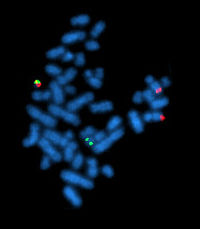
ExcelAutomat 1.3: Fragment analysis based on the distortion/interaction‐activation strain model
Sign Up to like & getrecommendations! Published in 2019 at "Journal of Computational Chemistry"
DOI: 10.1002/jcc.25546
Abstract: The distortion/interaction‐activation strain model (D/I‐ASM), a fragment analysis method, is applied to study the structure–reactivity relationship in reactions. The application of D/I‐ASM involves the generation of input files for points along a reaction profile, submission… read more here.
Keywords: fragment analysis; analysis; activation strain; interaction activation ... See more keywords

Real‐world data on prognostic value of measurable residual disease assessment by fragment analysis or next‐generation sequencing in multiple myeloma
Sign Up to like & getrecommendations! Published in 2022 at "British Journal of Haematology"
DOI: 10.1111/bjh.18211
Abstract: Measurable residual disease (MRD) negativity is a strong prognostic indicator in multiple myeloma (MM). However, the optimal use of MRD in daily clinical practice has been hampered by the limited feasibility of MRD testing. Therefore,… read more here.
Keywords: mrd; measurable residual; mrd negativity; fragment analysis ... See more keywords

BinMat: A molecular genetics tool for processing binary data obtained from fragment analysis in R
Sign Up to like & getrecommendations! Published in 2022 at "Biodiversity Data Journal"
DOI: 10.3897/bdj.10.e77875
Abstract: Abstract Processing and visualising trends in the binary data (presence or absence of electropherogram peaks), obtained from fragment analysis methods in molecular biology, can be a time-consuming and often cumbersome process. Scoring and analysing binary… read more here.
Keywords: binmat; binary data; obtained fragment; fragment analysis ... See more keywords

Comparison between Fluorescence in-situ Hybridization (FISH), Reverse Transcriptase PCR (RT-PCR) and fragment analysis, for detection of t (X; 18) (p11; q11) translocation in synovial sarcomas
Sign Up to like & getrecommendations! Published in 2020 at "Indian Journal of Pathology and Microbiology"
DOI: 10.4103/ijpm.ijpm_851_18
Abstract: Background: Synovial sarcoma (SS) is an aggressive, but a relatively chemosensitive soft tissue sarcoma, characterized by a specific, t (X;18)(p11;q11) translocation, leading to formation of SS18–SSX chimeric transcript. This translocation can be detected by various… read more here.
Keywords: q11 translocation; translocation; pcr; fragment analysis ... See more keywords